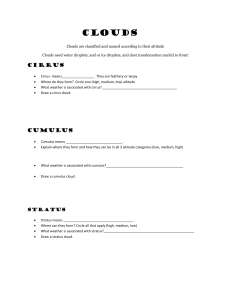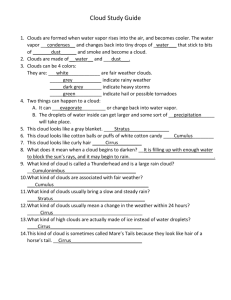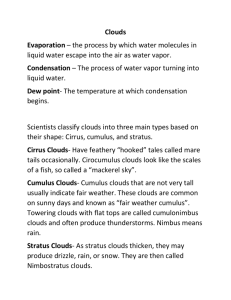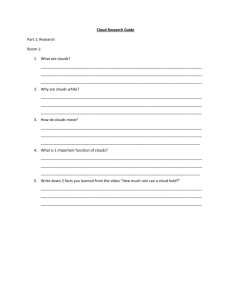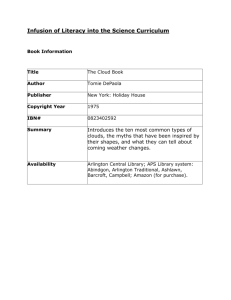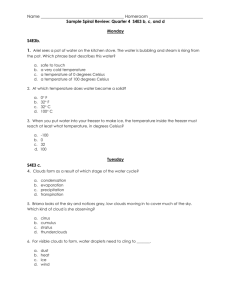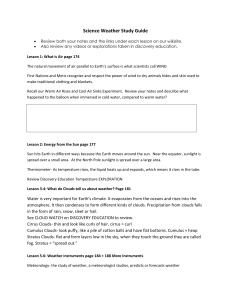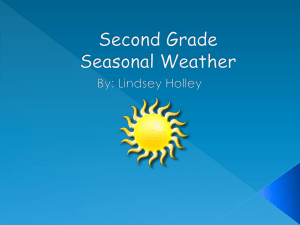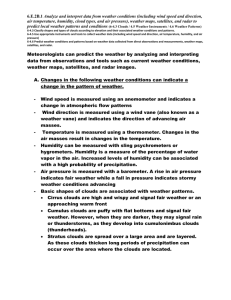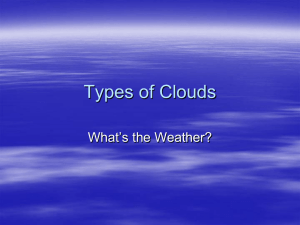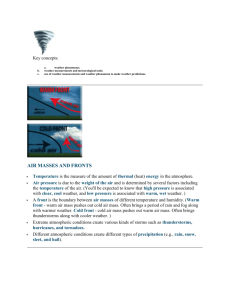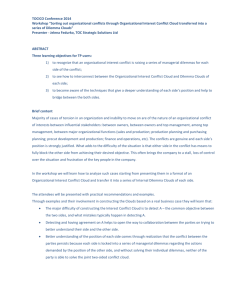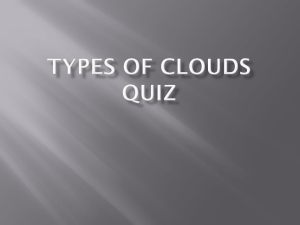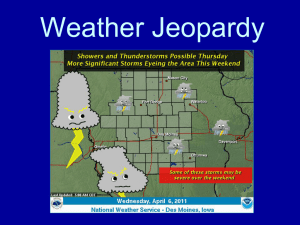homework #02 interpreting weather satellite images
advertisement
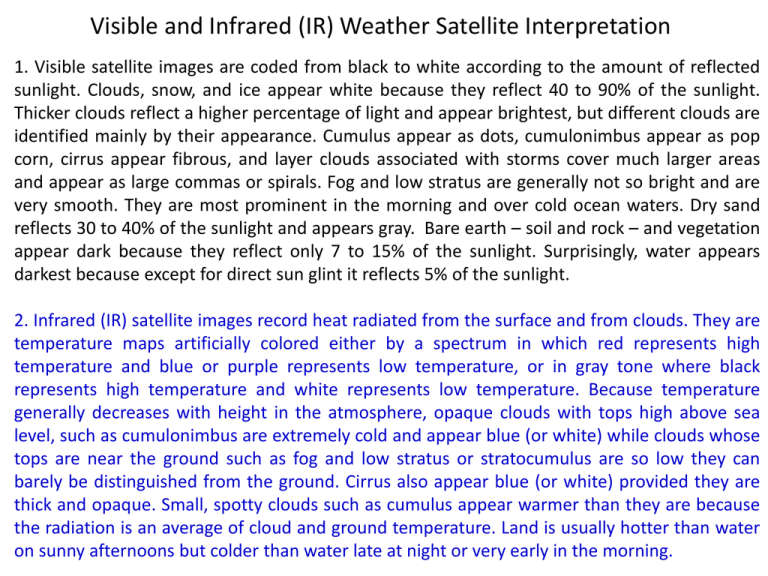
Visible and Infrared (IR) Weather Satellite Interpretation 1. Visible satellite images are coded from black to white according to the amount of reflected sunlight. Clouds, snow, and ice appear white because they reflect 40 to 90% of the sunlight. Thicker clouds reflect a higher percentage of light and appear brightest, but different clouds are identified mainly by their appearance. Cumulus appear as dots, cumulonimbus appear as pop corn, cirrus appear fibrous, and layer clouds associated with storms cover much larger areas and appear as large commas or spirals. Fog and low stratus are generally not so bright and are very smooth. They are most prominent in the morning and over cold ocean waters. Dry sand reflects 30 to 40% of the sunlight and appears gray. Bare earth – soil and rock – and vegetation appear dark because they reflect only 7 to 15% of the sunlight. Surprisingly, water appears darkest because except for direct sun glint it reflects 5% of the sunlight. 2. Infrared (IR) satellite images record heat radiated from the surface and from clouds. They are temperature maps artificially colored either by a spectrum in which red represents high temperature and blue or purple represents low temperature, or in gray tone where black represents high temperature and white represents low temperature. Because temperature generally decreases with height in the atmosphere, opaque clouds with tops high above sea level, such as cumulonimbus are extremely cold and appear blue (or white) while clouds whose tops are near the ground such as fog and low stratus or stratocumulus are so low they can barely be distinguished from the ground. Cirrus also appear blue (or white) provided they are thick and opaque. Small, spotty clouds such as cumulus appear warmer than they are because the radiation is an average of cloud and ground temperature. Land is usually hotter than water on sunny afternoons but colder than water late at night or very early in the morning. Name________________________________ Last First Interpret the features in the next 3 slides. 1. The cloud form is ________. The reasoning is ___________________________________ __________________________________________________________________________. 2. The cloud form is ________. The reasoning is ___________________________________ __________________________________________________________________________. 3. The cloud form is ________. The reasoning is ___________________________________ __________________________________________________________________________. 4. The time of day is ________. The reasoning is ___________________________________ __________________________________________________________________________. 5. The cloud form is ________. The reasoning is ___________________________________ __________________________________________________________________________. 6. The cloud form is ________. The reasoning is ___________________________________ 5 1 3 2 4 6 5 1 3 2 4 6 5 1 3 2 4 6



